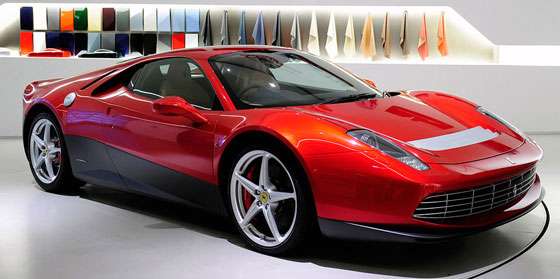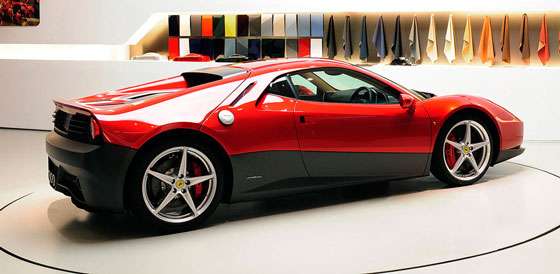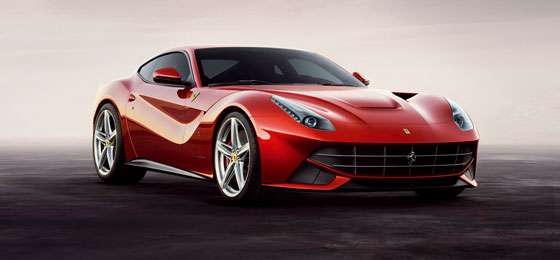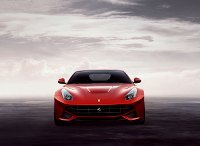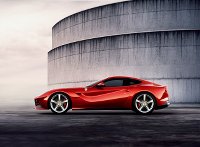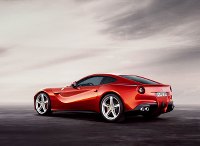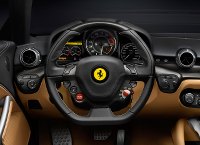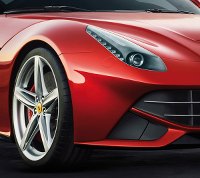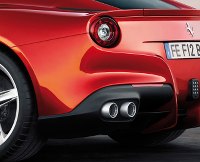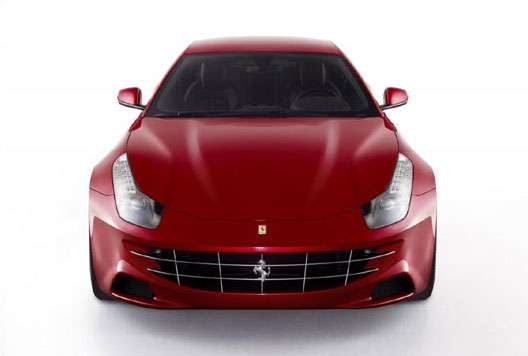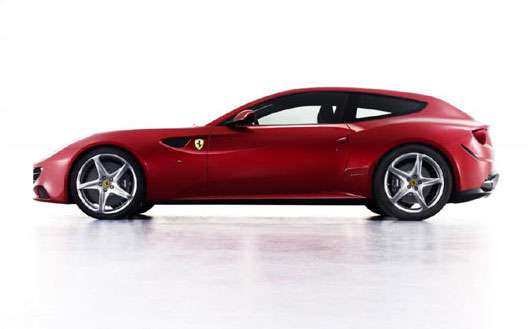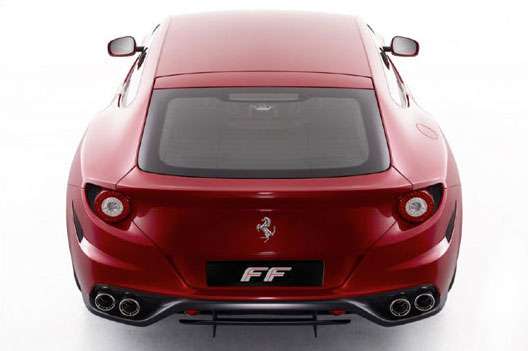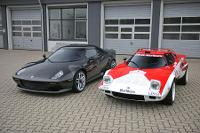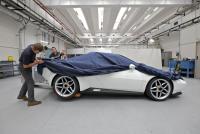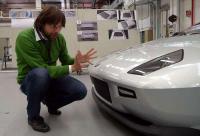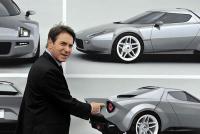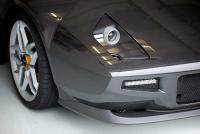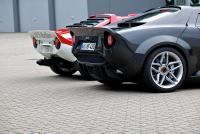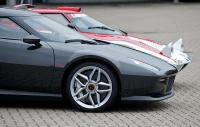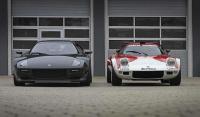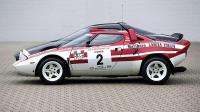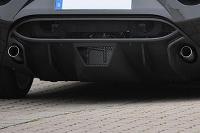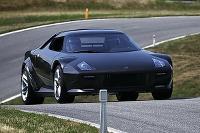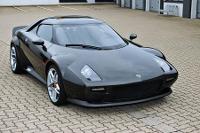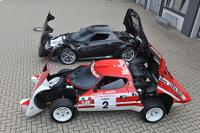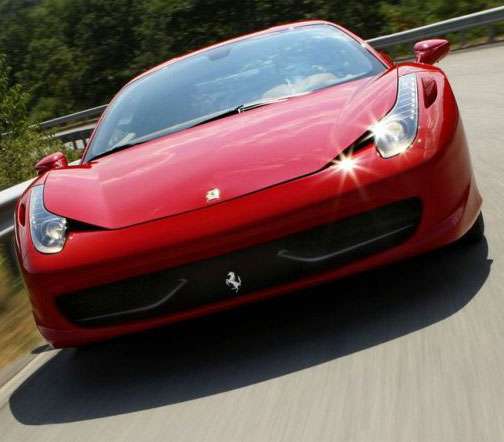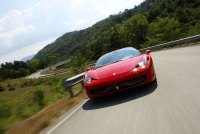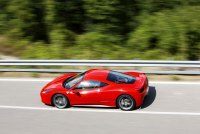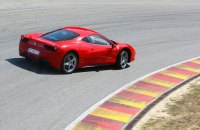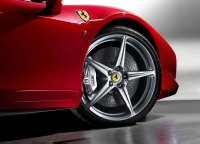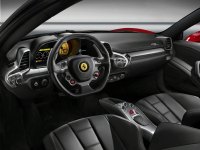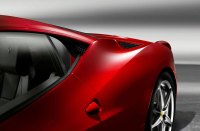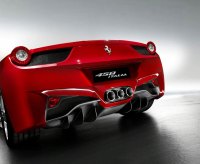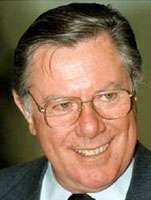 Sergio Pininfarina foi um empresário italiano e senador vitalício local, nomeado em 23 de setembro de 2005 pelo presidente Carlo Azeglio Ciampi. Formado em engenharia mecânica, logo começou a trabalhar no estúdio de design de seu pai, Battista Farina, fundador da marca, passando por praticamente todas as áreas.
Sergio Pininfarina foi um empresário italiano e senador vitalício local, nomeado em 23 de setembro de 2005 pelo presidente Carlo Azeglio Ciampi. Formado em engenharia mecânica, logo começou a trabalhar no estúdio de design de seu pai, Battista Farina, fundador da marca, passando por praticamente todas as áreas.Sergio assumiu o comando da empresa, após o falecimento de seu pai, e deixaria o cargo de CEO apenas em 2011, quando entregou o comando do estúdio a seu filho Andrea. A Pininfarina tornou-se famosa nos anos 1930 pela elegância dos carros que projetava, com desenho vanguardista, atingindo um sucesso que dura até hoje.
Sergio foi autor dos projetos Maserati GranTurismo, Fiat 124 Sport Spider, Alfa Romeo Spider, Lancia Beta Montecarlo, Peugeot 406 Coupé e as Ferrari 375MM, Dino Berlinetta Speciale, Testarossa, F40, Enzo e P4/5 Competizione, entre outros. Em 2007, Sergio foi incluído no Automotive Hall of Fame.
Com o falecimento de Andrea, em 2008, seu irmão mais novo, Paolo, assumiu o comando do estúdio. Enquanto seus filhos comandavam a empresa, Sergio Pininfarina passou a aparecer cada vez menos em eventos públicos. Em 2011, deixou a diretoria da Ferrari, após mais de 40 anos no cargo.
PRESS RELEASE
Turin, July 3 2012 - Life Senator Sergio Pininfarina, Honorary Chairman of the Pininfarina Group, passed away last night at his home in Turin. Until the last moment his wife Giorgia and sons Lorenza and Paolo were close to him.
The Board of Directors and the Company gather around the family in the undying memory of the entrepreneurial figure of Sergio Pininfarina, who led the Company for many years with steady hand bringing the business in the world, following the tradition of elegance and style constantly renewed with the highest standards of innovation and harmonious beauty.
Sergio Pininfarina was born in Turin on September 8, 1926. He graduated in mechanical engineering from the Polytechnic of Torino in 1950, then he began his career in the family firm, Carrozzeria Pinin Farina; in 1960, he undertook the responsibility of General Manager of the firm; in 1961 he became also Managing Director and in 1966, at his father's death, he took over the Chairmanship of the Company; in 2006 he became Honorary Chairman. In 1961, the President of the Italian Republic, Giovanni Gronchi, changed by decree the name Farina in Pininfarina. In 2005 he was appointed Life Senator for honouring the Country by high merits in the social field.
Among the most significant stages of his activity in Pininfarina: from 1955 to 1958, the planning and the construction of new facilities at Grugliasco (Torino); the construction of the new Studies and Research Centre inaugurated in 1966; in 1972, the Wind Tunnel on 1:1 scale started its activities, the first in Italy and one of the few in the world; in 1979, Pininfarina took the form of an holding Company; in 1982, a new company "Pininfarina Studi e Ricerche S.p.A." was settled at Cambiano (Torino); in 1986, a new plant in San Giorgio Canavese - near Turin - started operating; in the same year, Pininfarina successfully entered the Italian Stock Exchange; in 1986, with the setting up the company "Pininfarina Extra S.r.l.", the Pininfarina Group enlarged its design activities towards all the areas of the industrial design, beyond the traditional one of the means of transport; in 1987 a new plant in Bairo Canavese is acquired; in 1991 "Pininfarina Deutschland GmbH" was set up; in 2002 it is inaugurated in Cambiano the new Engineering Centre; in 2003 the incorporation of the new Company "Pininfarina Sverige AB".
Main past positions include:
From 1974 to 1977 he has been professor of "Car Body Design" at the Polytechnic of Torino. President of the Industrial Association of Torino (1978-1984);
Member of the European Parliament (1979-1988);
President of the Federation of Industrial Associations of Piedmont (1983-1988);
President of International Organisation of Motor Vehicle Manufacturers (1987-1989);
President of Confindustria (1988-1992);
Board Member of AUME (Association for the Monetary Union of Europe, 1989-1997);
Vice President of UNICE (Union of Industrial and Employers' Confederations of Europe, 1990-1994);
President of Comitato Leonardo - Italian Quality Committee (1993-1996);
Co-President of "Comitato per la Direttrice Ferroviaria Europea Transpadana" (1991-2001);
President of Banca CRT (2001-2002);
Chief of the Italian delegation in the Intergovernmental Italian- French Commission for the new high-speed railway link between Lyon and Turin (2001-2005);
Chairman FIDIA S.p.A. (1996-2006);
Co-President Italy-Japan Business Group (2004-2007);
Chairman Editrice La Stampa S.p.A. (2004-2008);
Member of the Board of Directors of Ferrari S.p.A. (1969-2011).
Sergio Pininfarina received numerous honours. The main are: he was appointed "Cavaliere del Lavoro" by the President of the Italian Republic (1976); Légion d'Honneur (Chevalier, 1979, and Officier, 1997), "Honorary Royal Designer for Industry" (1983), Foreign Member of the Royal Swedish Academy of Engineering Sciences (1988), Designer Lifetime Achievement Award (1991), Super Trophée de l'"Automobile Magazine" (1992), "Guglielmo Tagliacarne" award (1994) , the "Italy in the World" award (1994), the Career Award Compasso d'Oro (1995), the "France-Italie" Award (1997), "Lion d'Oro" (1998), "Trophée du design" (1998), Premio Leonardo (1999), "Head of the Century in the International Automotive Hall of Fame" (2001), the award "Torino libera" (2001), Business and Culture Award (2003), Palme d'Or du Festival Automobile International (2005), Automotive Hall of Fame of Dearborn, Michigan (2007); European Automotive Hall of Fame of Geneva (2008).
He received 4 Honorary Degrees: in 1993 the Honorary Degree in Economics and Commerce by the LUISS-Rome; in 2002 the one of the Royal College of Art of London and the one in Industrial Design of the Polytechnic of Milano; in 2004 the one as Doctor of Fine Arts from the College for Creative Studies-CCS of Detroit;

